back to
menu
Triangles, 1972-1973
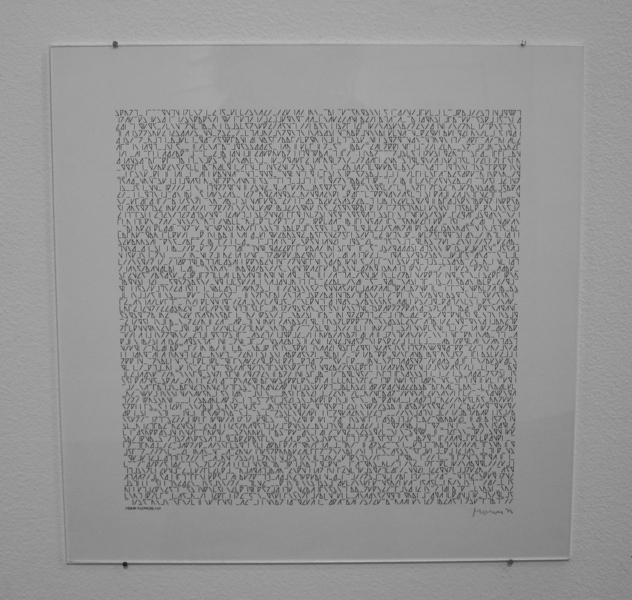
Grid of Triangles with Missing Lines P-147, 39 x 39 cm, 1973
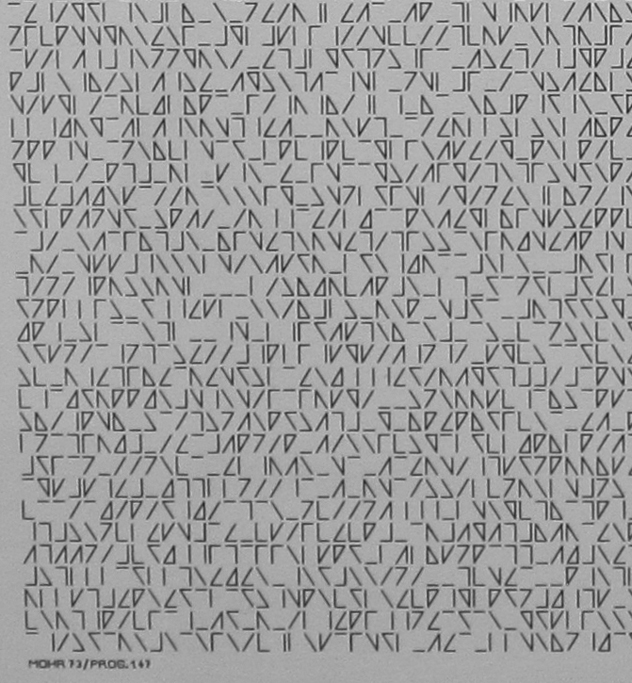
Closeup of Grid of Triangles with Missing Lines P-147, 1973
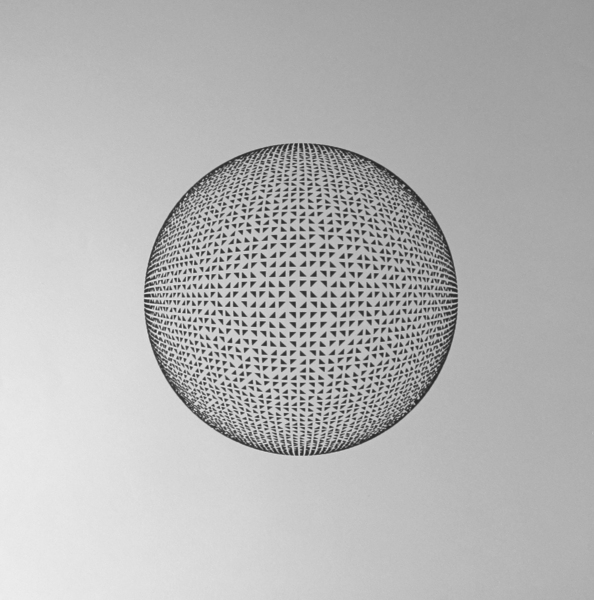
Grid of Solid Triangles Projected onto a Sphere, P-129, 50 x 50 cm, 1972
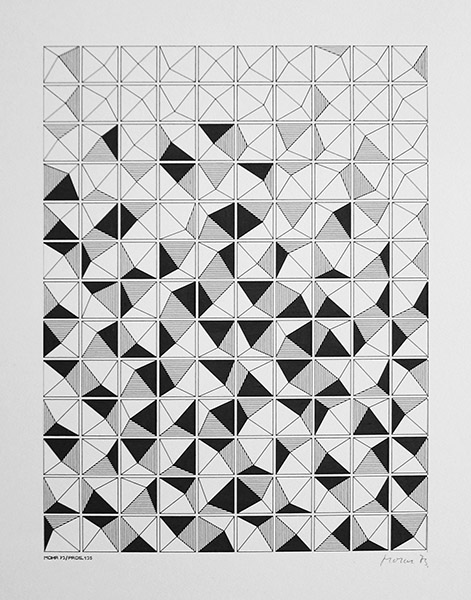
Triangles Formed from Random Point in Squares, P-135, 46 x 38 cm, 1973
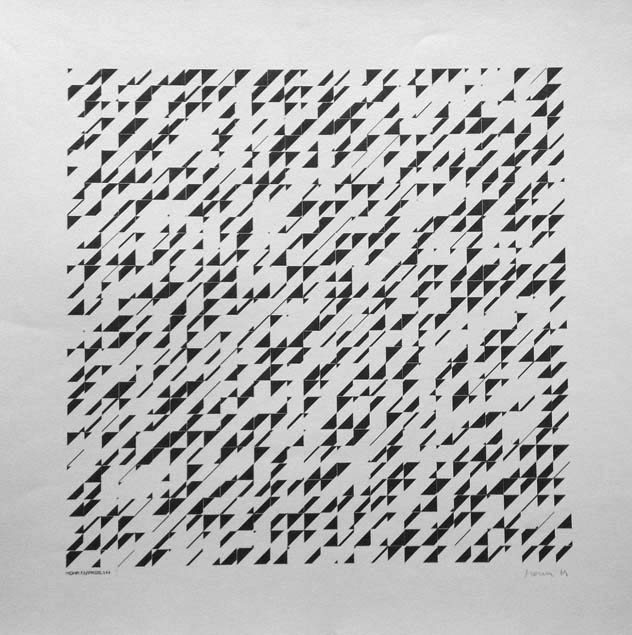
Grid of Statistically Sliced Triangles, P-144a, first in a series of 2 drawings, 50 x 50 cm, 1973

Grid of Statistically Sliced Triangles, P-144b, second in a series of 2 drawings, 50 x 50 cm, 1973
© 1972-1973 by Manfred Mohr
About the algorithms:
P-147, 1973, is one of the precursor drawings to my cubes with missing line drawings, Cubic Limit I, 1973-1975
- In each square on a very fine grid, one of the four corners is chosen randomly. In this position a triangle is drawn with 1, 2, or 3 lines.
P-129, 1972, is related to the drawing, Sphereless, P-128, 1972, in which squares with missing lines are projected onto a sphere.
- In each square on a grid, one of the four corners is chosen randomly and a solid triangle is drawn. The grid is projected onto a sphere.
P-135, 1973
- In each square on a grid, a point near the center is randomly chosen. This point together with the four sides of the square form 4 triangles.
- 0, 1, or 2 triangles of each square are chosen to be filled - the first one is filled with hash lines, the second one with solid lines.
- The probability that a triangle will be filled, increases towards the bottom of the grid.
P-144, 1973
- In each square on a grid, one of the four corners is chosen randomly and a random slice of a triangle is drawn.





